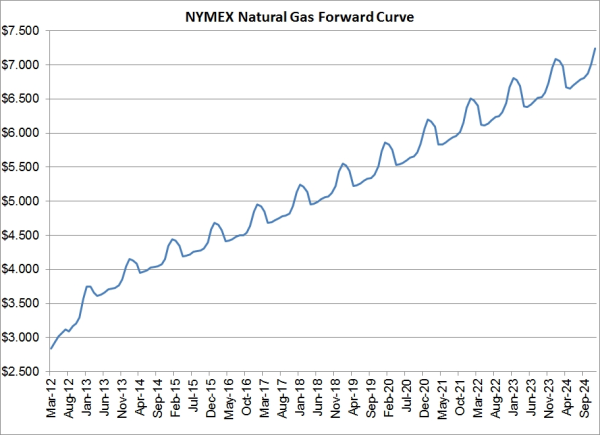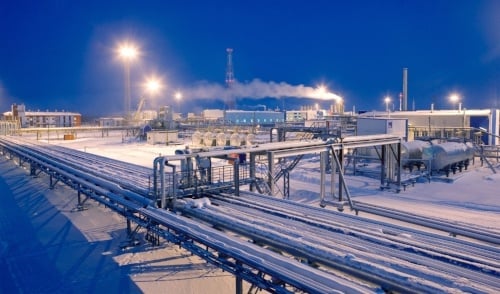1 min read
Creative Producer Hedging Strategies In A $3.00 Natural Gas Market
As natural gas prices remain depressed, despite the recent bounce, we are receiving numerous inquiries from natural gas producers asking for hedging...
According to an article published by Reuters on Friday, Dow Chemical is, "Considering a hedging program for the first time in a decade to lock in rock-bottom prices for the fuel." The article further quotes CEO Andrew Liveries stating, "We used to do a lot of that in the late 1990s, early part of the last decade, and you can expect us to talk more about that in the future," which makes a lot of sense considering that Dow's earnings increase/decrease by approximately $20 million for every one cent increase/decrease in the price of ethane.
As we noted a couple weeks ago in the post titled, Is The Time Nigh For Consumer Natural Gas Hedging, the NYMEX natural gas forward curve was, and remains, at levels we haven't seen in nearly 10 years. Yesterday, the one year, two year and three year natural gas forward curves settled at $3.142, $3.50 and $3.738, respectively.
Forward prices at such low levels will allow many large natural gas consumers to lock in very healthy profit margins, all else being equal, for the coming year, two or more. Hence the reason that Dow s taking action. It's probably safe to say that we will see many others in their industry, as well as numerous others, taking similar action.
For companies that are inclined to take a wait and see approach, in hopes that natural gas prices will continue to decline, there are several low cost, option hedging strategies that will allow you to have your cake and eat it too, or at least part of it.
As an example, you could purchase a call option spread (bull call spread) which involves the purchase of a call option with a "low" strike price and the sale of an additional call option with a "higher" strike price. As of yesterday, you could have purchased a one year $3.50/$3.75 call spread for approximately $0.10/MMbtu, which would protect you against natural gas prices increasing above $3.50, up to $3.75, or a maximum of $0.25/MMbtu.
While a call option spread like this doesn't provide you with a complete hedge against a long term price increase, it will allow you some time to react, should natural gas prices increase anytime soon. On the contrary, if the forward curve stays near the current level or declines further, you'll be able to enjoy the lower prices, as you will only have spent 10 cents on the call spread. For a deeper explanation on hedging natural gas with call option spreads, see Fuel Hedging In Volatile Markets With Call Option Spreads, which focused on fuel rather than natural gas but the concept is the same
If a call option spread doesn't seem like your cup of tea, another low cost hedging strategy for natural gas consumers to consider in this environment is a consumer costless collar, which we previously explored in the post titled, Energy Hedging - Back to the Basics Part V - Collars.
In closing, if you're a large natural as consumer and you aren't currently well hedged, at least take the time to conduct your analysis and give it serious consideration, as not doing so could very well be the equivalent of looking a gift horse in the mouth.

1 min read
As natural gas prices remain depressed, despite the recent bounce, we are receiving numerous inquiries from natural gas producers asking for hedging...

2 min read
This post is the sixth in a series where we are exploring many of the hedging strategies which are available to commercial and industrial natural...

2 min read
As a result of rising geopolitical tensions across the world – with many countries also facing key elections in the coming months- and fundamentals...